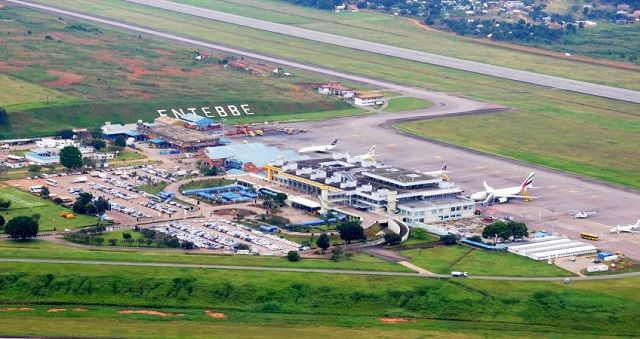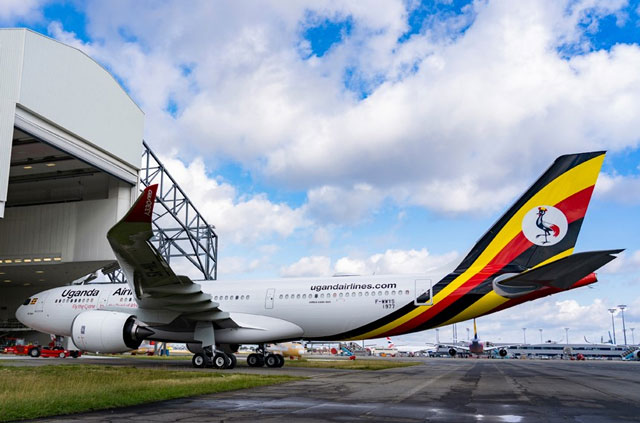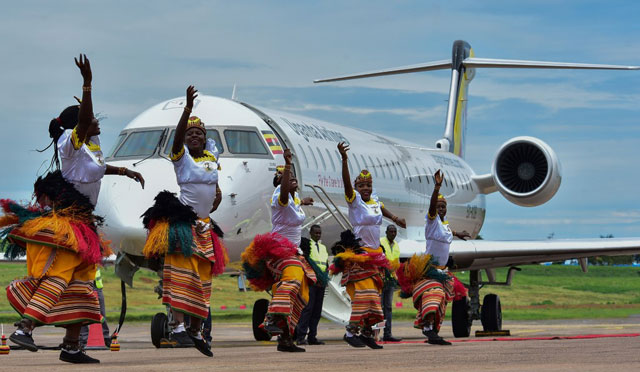
The Airbus has arrived a little too early for an airline that has effectively been active for a few months
COMMENT | DEREK NSEKO | Air transport is an economic enabler. It has the potential to boost the economy by facilitating trade, business and social connectivity. The aviation industry supported over 6 million jobs and contributed $55.8 billion to Africa’s GDP in 2019 with the industry having been forecast to grow by 5% year on year before the pandemic.
All the above shows that aviation can be integral to a country’s economic development strategy. This can be seen with Rwanda where a deliberate effort to grow the aviation industry spearheaded by one of the fastest growing airlines in Africa has boosted tourism, positioned Rwanda as a top business events hub and led to significant infrastructural developments such as the new airport in Bugesera.
The potential for aviation growth in Uganda is reflected in the fact that Entebbe international airport has reached its capacity. The year ending 2019 recorded 1.9 million passenger movements at the Ugandan hub which is now going through expansion to ease capacity constraints.
Does Uganda have a long term aviation strategy or have we adopted a peace-meal approach?
Current evidence points to the latter and a lack of harmony between the main pillars of the industry which are, the regulator, the airports, the skills development structure and the national airline.
To begin with, the civil aviation authority controls the country’s airports contrary to international best practices.By conducting oversight over its own business operation, CAA creates a conflict of interests.
To circumvent this, we would need an independent airports company to run the country’s airports leaving the CAA to focus solely on regulation of the industry and consequently enhancing efficiency in airport operations and management. While the Ugandan regulator has come a long way since the fallout from the 2014 ICAO audit which led to the collapse of the then flag carrier, air Uganda, significant reform is still required to achieve international standards and to deliver on the promise of Uganda’s aviation industry.
Uganda airlines?

With regards to the national airline, it’s over a year since operations began but given 2020 was punctuated by a global pandemic, the jury is still out. In a new world of travel, Uganda airlines is looking brave and bullish with the purchase of brand new Airbus A330 aircrafts. But is this really a masterstroke or a poisoned chalice
The Airbus has arrived a little too early for an airline that has effectively been active for a few months over the past year, barely getting a chance to grow market share and generate feed for the long haul wide body aircrafts. It however gives Uganda airlines a product that can rival any in comfort, efficiency and economics.
For this airline to work it must be built on three pillars of excellence and success.
It should be an airline that people love to fly, an airline that people enjoy working for and an airline that is bankable and attractive to investment.
Uganda airlines must be well run by competent and ethical professionals for it to avoid the familiar trappings of state owned airlines in Africa, a mean feat given that the political elite in Africa cannot keep their hands off this particular cookie jar. But it’s imperative that the airline must continually be held accountable or the tax payer will bear the burden for a long time.
African airlines have largely failed under the weight of gross mismanagement and corruption so if the president’s recent sentiments that he does not want to hear of any corruption at the national airline are anything to go by, this will be a good start!
The stage is set for the battle of East Africa’s skies. But can all these airlines work in an industry that is low margin and historically loss making.
The year 2020 has taught us that agility is the biggest strategic advantage in the airline industry as evidenced by Ethiopian airlines’ swift pivot to the cargo market during the pandemic. However, flexibility is the biggest demand of the new normal and airlines will have to adjust their business models to create a more flexible travel environment for themselves and their customers.

A lot of airlines around the world have already abandoned the old tradition of charging for date changes and trip cancellations as a way of adapting to the shifting landscape of aviation.
But the challenges faced by the African aviation industry have existed way before the pandemic, and they persist today.
Our governments look at aviation as a cash cow, often choking airlines through high taxes and charges. Even during the worst crisis that the industry has faced in history, calls by the International Air Transport Association to request governments to waive some of these charges in order to ease the burden on Airlines have largely fallen on deaf ears.
Air transport in Africa remains highly restrictive and protectionist with bilateral arrangements being the only way that our airlines can access new markets. Efforts to liberalize the air transport market in Africa have been painfully slow. The single African Air transport market, an African Union flagship project meant to unlock Africa’s aviation potential by lifting some of these restrictions to market access is merely limping forward. 34 countries across Africa have made the solemn commitment to SAATM. Only 18 of those have signed the memorandum of implementation and Uganda is not one of them.
African governments need to play their part in creating an enabling environment for aviation to thrive.
Lastly, on the Ugandan front, capacity building should be a priority with a wider focus on the full spectrum of careers in the industry.
The aviation academy at Soroti, while a great facility and with good equipment, still needs some reform in management and operational structure in order to ease bottlenecks, improve efficiency and eliminate bureaucracy. For the institution to achieve its full potential, it’s relationship with the government through ministry of works and transport needs to be addressed.
The government must also consider a dedicated bursary program for prospective aviation professionals in order to eliminate the biggest hurdle to pursuing a career in aviation and to allow an opportunity for the best talent to filter into the industry.
For Uganda’s aviation industry to thrive, the advancement of these key areas must be harmonized under one vision and strategy.
********
 The writer, Derek Nseko is an aviation expert, a qualified commercial pilot and managing director at iFly Global derek@nseko.com twitter: @av8r_derek
The writer, Derek Nseko is an aviation expert, a qualified commercial pilot and managing director at iFly Global derek@nseko.com twitter: @av8r_derek
 The Independent Uganda: You get the Truth we Pay the Price
The Independent Uganda: You get the Truth we Pay the Price


